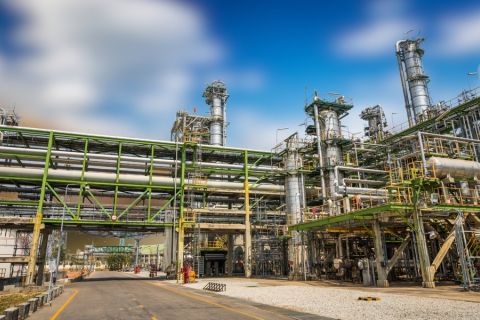“Peak oil” is the time when the maximum rate of global petroleum production is reached. After this, the rate of production enters a terminal state of decline. The problems in the energy industry are best understood by analyzing three numbers: 91, 86 and 90.
“91” is the lack of infrastructure investment. The United States has only 91 days of petroleum storage.
“86” is what developing countries have steadily increased production to: 86 million barrels per day. This does not appear to be a problem until you realize that the world has not had a significant oil discovery in 40 years and countries like China have one-third the consumption of oil and four times the consumers.
“90” is the percent of the world’s unaudited reserves. This number becomes even more alarming when you learn that the reserves that are audited show flat or declining production. If the audited companies can’t find and replace reserves, it seems impossible that the unaudited national oil companies would be able to perform significantly better.
I am able to understand the problems in the industry as my education and experience includes more than a decade of operations and financial oilfield experience. My background has exposed me to every segment of the energy industry and provided me with the knowledge of how the industry works and where problems could arise.
Consider world oil production oil over time. From the 1930s to the 1970s, the U.S. and Europe were the primary consumers of oil, and discoveries of new oil fields kept the world’s market adequately supplied. During the early 1970s, the United States experienced its first significant supply disruption.
As predicted, in 1958, by M. King Hubbard, a Shell Oil geologist, domestic production peaked in 1970 and the problem was intensified as OPEC countries restricted exports in 1973. The short-term supply disruption and resulting price spikes created fuel shortages and provided a glimpse of the problems of developing an economy with constrained energy resources.
The 1970s were a trial run at the inconvenience of living in a world dependent on a non-renewable energy source. This time, the problem is not local—it’s global.
Domestic oil-production declines and the oil crisis in the 1970s were solved with a decade of infrastructure investment to build drilling rigs, distribution networks, refineries and ocean-going tankers. As U.S. supplies continued on an irreversible decline, production was now coming from the highest-quality, land-based oil fields in the Middle East.
During the 1980s and 1990s, demand was in check as China and India began to industrialize. Consumption was primarily limited to developed nations that were building sprawling suburbs, inefficient transportation and finding ways to make lives more convenient.
Unexplained low oil prices made only the lowest-risk exploration feasible, reduced infrastructure investments to maintenance and rendered alternative energy sources impractical.
At the turn of the millennium, China and India began to dramatically increase their consumption from a worn-out energy infrastructure. In 2005, prices began to spike as petroleum supply from the world’s aging oil fields struggled to keep up with demand. Record rig counts and an intensive exploration effort found new reserves only in deep waters, tar sands and oil shales, which are expensive to produce and take five to 10 years to bring online.
The primary difference between the energy crisis in the 1970s and today is that, even if we find more oil, it will be hard to reach places and we do not have the equipment and people to produce it.
Following are my conclusions:
1. Peak oil production will occur by 2012. 2. Developing economies will gradually push prices up due to increasing demand. 3. Nationalism, supply disruptions or a downward revision to the world’s proven reserves will cause oil prices to spike dramatically.
4. The cost of almost everything will increase as oil has permeated every fabric of our lives.
5. There will continue to be a tremendous transfer of wealth from resource-poor nations to resource-rich nations, such as Russia, Venezuela, Saudi Arabia, Iraq and Iran.
Although peak oil is not a difficult concept, it is my objective to present the underlying data so people can be aware that this is a near-term issue that will have profound consequences that will affect your life. --Steve Crower
About the author: Steve Crower is a Denver-based energy investment banker with Starlight Investments LLC, and formerly in finance and operations for oilfield-service companies FMC Technologies and Network International, and an investment banker for Capital One Southcoast. Click for the PDF (starlight-investments-overview-may-2009) about Starlight Investments. Click for his movie presentation on peak oil: http://www.youtube.com/watch?v=jDIYgG0gSiY. Also see the blog post The Peak Oil Report From Starlight Investments’ Steve Crower.
Recommended Reading
Talos Energy Sells CCS Business to TotalEnergies
2024-03-18 - TotalEnergies’ acquisition targets Talos Energy’s Bayou Bend project, and the French company plans to sell off the remainder of Talos’ carbon capture and sequestration portfolio in Texas and Louisiana.
SLB to Buy Service Firm ChampionX in $7.7B All-stock Deal
2024-04-02 - SLB will acquire ChampionX for $7.74 billion in an all-stock deal that puts a 14.6% premium on ChampionX’s April 1 closing price.
CERAWeek: Exxon Mobil CEO Says Not Trying to Acquire Hess
2024-03-18 - CEO Darren Woods said Exxon Mobil is trying to secure preemption rights over Hess Corp.'s Guyana assets in its dispute with Chevron, not buy the company itself.
ConocoPhillips CEO Ryan Lance: Upstream M&A Wave ‘Not Done’ Yet
2024-03-19 - Dealmaking in the upstream oil and gas industry totaled $234 billion in 2023. The trend shows no signs of slowing, ConocoPhillips CEO Ryan Lance said at the CERAWeek by S&P Global conference.
Renewables’ Share of Deal Flow Up, But M&A Slowing
2024-02-13 - Abundant capital remains available for renewable energy projects, and developers are looking for investors to help get projects over the finish line, expert says.




